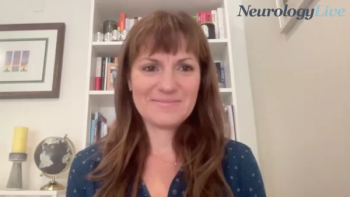
Dreams... Why Do Some Come True?
What's the science behind predictive dreams?
Can one’s dreams foresee the future?
It's a question that has captivated cultures for as long as history has been recorded. Many attribute the predictive power of dreams to spirituality and divine intervention. Yet, regardless of the faith of any individual who enters the dream state, there are numerous instances in which dreams actually do come true in ways that were not anticipated. Most prophetic dreams do not bear spiritually significant meaning and hold no link to life-changing events.
Researchers have found that the brain’s activity during sleep may explain the capacity of dreams to foretell the future.
The Science Behind Predictive Dreams
There are frequent stories of people who explain that they had dreams that unexpectedly came true. There are several possible explanations.
Some experts suggest that dreams may include events that a person has not necessarily thought through while awake. After dreaming of something, such as passing or failing a test, a student might begin to believe in the probability of either outcome. In this example, a student’s behavior might change: he or she may study more or less for the test after the dream. This can happen because the dream may be considered a reflection of the most likely outcome, which becomes very life-like and powerful in the dream state. The power of dreams, however, only applies to outcomes that can be at least partially controlled by a person who knew of the dream.
However, some dreams come true without any intervention or “post-dream” action that could have been controlled by the dreamer or anyone who knew the content of the dream. Evidence points to the idea that dreams can also be a synthesis of a person’s conscious and subconscious memories-a synthesis of real clues that make it easier to accurately anticipate the probability of certain outcomes. This theory also suggests that obvious clues may not be considered important until all the facts are pooled. Sometimes this occurs during sleep.
Dream Anatomy and Function
Rapid eye movement (REM) sleep is dependent on the intact structure and function of several areas of the brain. One study showed that patients who had suffered from bilateral lesions of the ventromesial region or the parieto-temporo-occipital junction lost the ability to dream during sleep.1,2
And a few studies point to pattern recognition as a component of REM sleep. This suggests that there may be some linking of events that occurs during the dream state that does not always occur when awake. . . essentially putting concrete signs that are collected during waking hours together to form a reasonable deduction about their implications.
At the 24th Congress of European Sleep Research Society in Basel, Switzerland, in 2018, Bernd Feige, PhD, Department of Clinical Psychology and Psychophysiology, Medical Center, University of Freiburg,
The study presents direct evidence that the subjective experience of insomnia may be specifically connected to the REM sleep state. Assuming that chronic hyperarousal is a relevant pathway for insomnia, this may become especially evidence during REM sleep, which in insomnia, reflects a hybrid sleep state coupled with altered sleep perception.
“We see a modified type of REM sleep which is experienced by the insomnia patients as being awake, and it has these dreams which are experienced as wake-like and we think it’s like having a kind of nightmare, a very stressful dream that’s about being awake," Feige said.
For more information on sleep and sleep medicine, check out the
Sleep Paralysis and Hallucinations
Dreams are just one aspect of the processes that occur during REM sleep. Sleep paralysis and sleep hallucinations (also referred to as “sleep demons”) are other experiences for some that can be incredibly frightening. Many describe the experience as waking in the middle of the night, fully aware of the surroundings but unable to move, paralyzed. As the seconds tick by, they become more and more frightened until they fall back asleep or slowly gain movement again. Others describe feeling a presence in the room with them.
And, yet, aside from the fright, they’re harmless. They’re simply the results of disrupted sleep. Still, that doesn’t help quell the fear when they happen. Sleep disorder specialist Alicia Roth, PhD, a clinical health psychologist at Cleveland Clinic, spoke to what causes these conditions and what you should know if you ever experience them, noting that it "happens when there’s a malfunction between REM sleep and wakefulness." These occurrences, she says, affect about 10% of the population.
“There are a lot of different things passing through your mind during REM sleep, some of which you remember as dreams,” she continued. “And one of the ways our bodies protect us during this period of REM sleep is to paralyze us so that we don’t act these things out in our sleep.”
For those who experience sleep paralysis, the problem comes when there’s a disruption in that transition between REM sleep and waking. “You’re consciously waking up, but that protective paralysis from REM sleep hasn’t fully subsided yet,” Roth explained.
For more of the conversation with Roth, click here:
Further Reading: Revonsuo A. The reinterpretation of dreams: an evolutionary hypothesis of the function of dreaming. Behav Brain Sci. 2000;23:877-901.
REFERENCES
1. Solms M. The Neuropsychology of Dreams: A Clinico-Anatomical Study. Mahwah, NJ: L. Erlbaum. 1997.
2. Llewellyn S. Dream to predict? REM dreaming as prospective coding. Front Psychol. 2015;6:1961.
Newsletter
Keep your finger on the pulse of neurology—subscribe to NeurologyLive for expert interviews, new data, and breakthrough treatment updates.





















